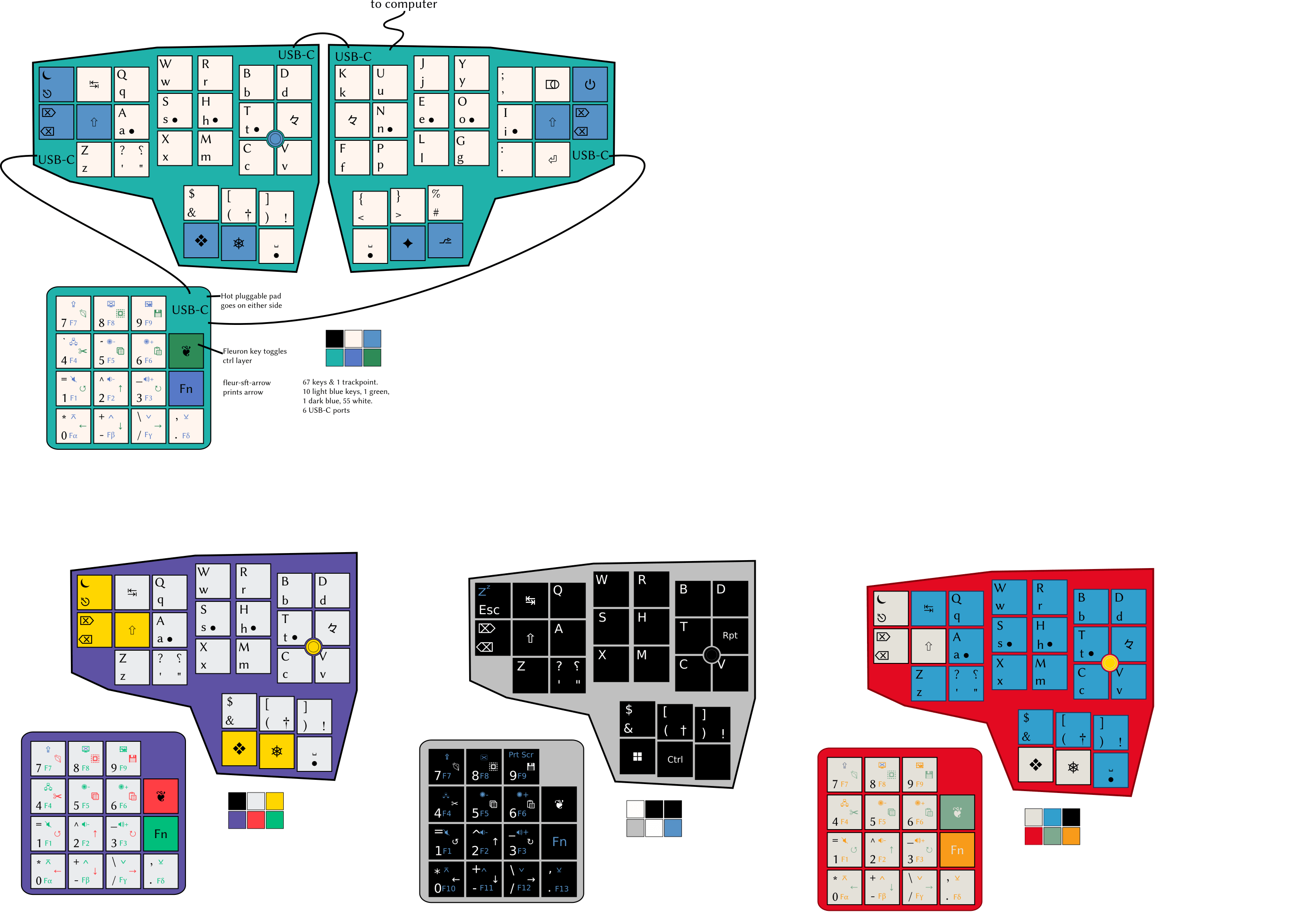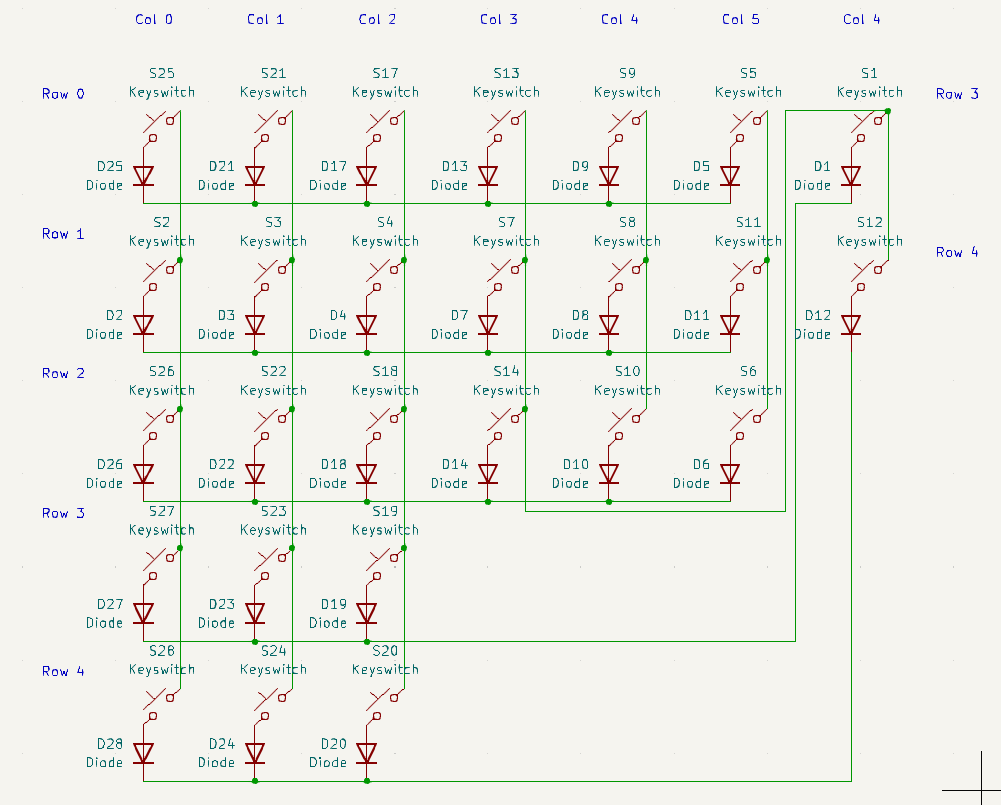

Here’s what the layout should look like when it’s done, and what the schematic for the right half looks like now. I’ve seen Joe Scotto’s tutorial on the subject.
I’m currently making a schematic for this keyboard in KiCad v7.0. The schematic has the power & backspace keys moved down near the thumb keys to use one fewer pin on the controller, hence the slightly messy wiring.
- What controller should i use for a keyboard like this? How many more pins will it need than just the 5 columns and 6 rows on each side?
- What USB connector ports should i use? What are the differences between one USB-C port and another?
- Do i need a controller for each part of the keyboard, or only for the part that plus into the computer?
- Where can i get KiCad files for a trackpoint so i can add that to the schematic and PCB?
- I’ve only ever owned one mechanical keyboard (Chouchou by dlip) and it doesn’t look like it has any diodes. Do i need those or not?
- Can i hide the controller and ports in a case if i’m using low-profile switches and caps?
Thanks in advance.


The problem you might run into is that if you connect everything “properly” via USB, they are separate, discrete devices. In many ways, that’s fine. People have multiple keyboards attached while testing things. Separate numpads and macropads basically are this. The challenge you are going to run into with the two main halves of your keyboard are that if they are discrete USB HID devices, they cannot share any modifiers that are not built into the OS. So like, “Shift” and “Control” will work fine, but “FN1” and “Fn2” and anything you code outside the “normal” HID protocol will be quarantined to that half of the keyboard. You couldn’t, for instance, hit a layer-shift key with your left hand and tap F11 with your right.
I agree with the other poster that to make the numpad piece truly modular, integrating a hub of some sort will work. I would just say the two halves of your split keyboard need to work together as a single device, one way or another. ZMK is built for wireless keyboards, so that might be the first place to go looking.
Finally, while I’m personally deeply fond of builds that include numpads, many folks who go ergo do it specifically to keep their hands from flying across multiple devices, so they figure out how to do numerical entry and navigation on the main units of their split device.